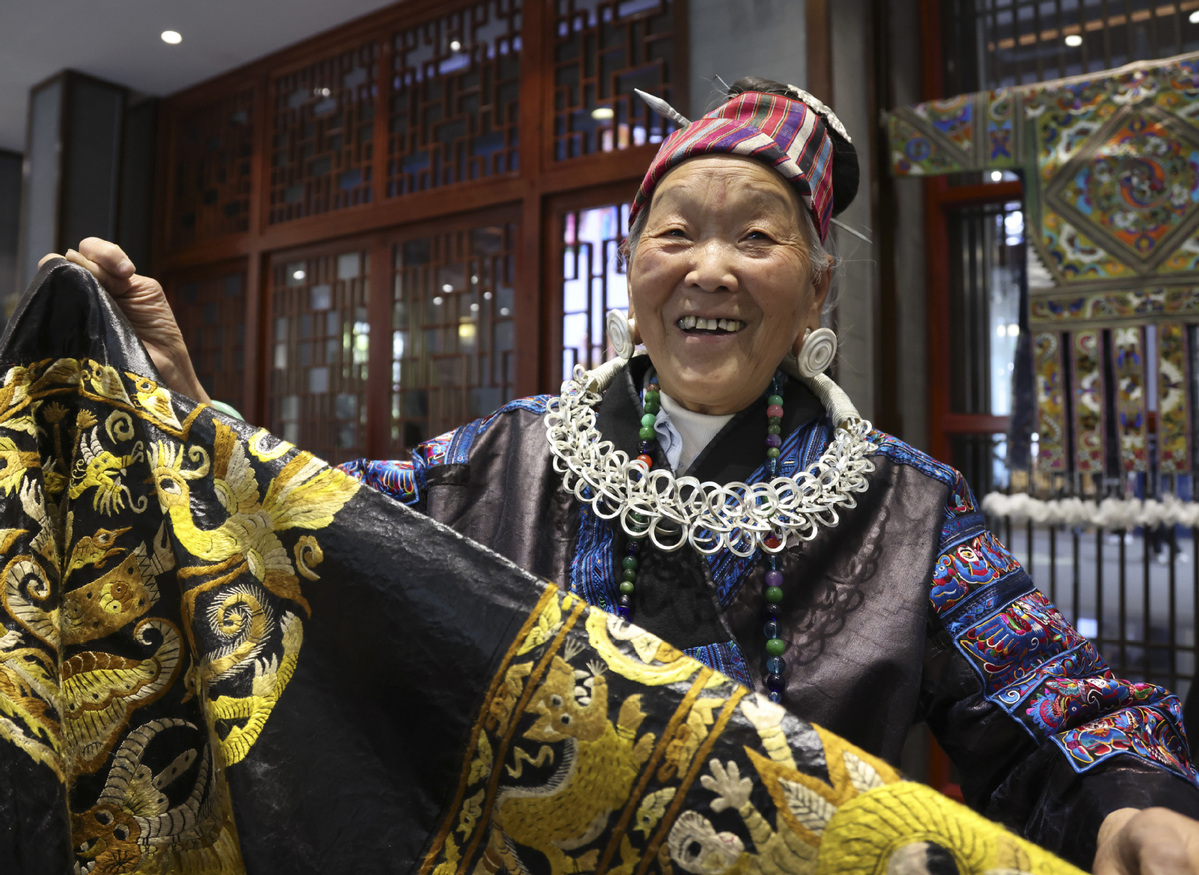

Pan Yuzhen, a 77-year-old embroiderer, was thrilled to do the catwalk show in her hand-made Miao costumes last week in Guiyang, capital of Southwest China's Guizhou province.
At the opening ceremony of the 17th Guizhou Tourism Industry Development Conference held on April 6, a fashion show featuring signature local ethnic cultures drew rounds of camera flashes capturing images of the delicate Miao embroidery on the latest collection.
Pan, of the Miao ethnic group, hails from Taijiang county, Qiandongnan Miao and Dong autonomous prefecture.
She learned the embroidery art from her mother at the age of 5 as an ethnic tradition. But it was way beyond her expectation that the folk craft could present itself on stages at world-famous fashion weeks as it does nowadays and that the embroideries created by her could one day be spotted in the daily lives of families across China as household products, which is now the case.
Pan has been to five foreign countries, including the United States, France and the United Kingdom. "Foreigners love our embroideries. They were even willing to queue hundreds of meters long at Christmas, just to buy an embroidered notebook or ornament for their families," she said.
Xia Hua, chairman of Eve Group, a Chinese clothing brand, has been devoted to promoting the intangible cultural heritage of China's embroidery industry for more than three decades.
Over the past decade, Xia and her team have been committed to the digitalization of ethnic handicrafts and have established databases on Chinese traditional embroidery patterns and ethnic artisans.
So far, her company has collected more than 8,000 kinds of embroidery patterns and information about more than 22,000 embroiderers, which has laid a solid foundation for building a digital industrial base for embroidery.
"Access to embroidery patterns and embroiderers enables global designers to find appropriate cooperative partners to design and create relevant products," Xia said.